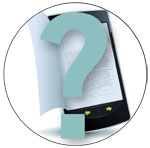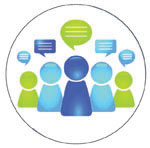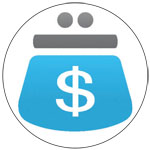(Library Journal is presenting a series of articles, Exploring Ebook Options, that takes an indepth look at some of the ebook platforms that are now in the marketplace. Baker & Taylor’s Axis 360 and Freading from Library Ideas have already been profiled. This story provides an environmental scan.)
According to a survey conducted by the Chief Officers of State Library Agencies (COSLA) in the summer of 2011, 39 percent of public libraries had not begun to offer downloadable media service (ebooks, audiobooks, movies) to their communities. COSLA reported that small, rural libraries with limited budgets were most likely not to have access to downloadable media.
COSLA believes that ebooks will be the preferred format for reading materials in the future. As a result, it has set a goal for all U.S. public libraries to offer ebooks and downloadable media by 2015. As a step in that direction, LJ is publishing a series of articles that closely examines the various ebook platforms available, including this environmental scan.
Why buy ebooks?
 There are a variety of reasons for purchasing ebooks, and the first is access. Offering ebooks extends content beyond the physical boundaries of the library. In a digital world, patrons aren’t restricted to brick-and-mortar hours. They can choose to download a new book late Sunday evening because content is available 24/7.
There are a variety of reasons for purchasing ebooks, and the first is access. Offering ebooks extends content beyond the physical boundaries of the library. In a digital world, patrons aren’t restricted to brick-and-mortar hours. They can choose to download a new book late Sunday evening because content is available 24/7.
Furthermore, there has been an explosion of interest in ebooks and ereaders. The Pew Internet & American Life Project released research findings in January stating that “[t]he number of Americans owning at least one of these digital reading devices (tablets or ereaders) jumped from 18 percent in December to 29 percent in January.” This has put demands on public libraries for not only digital content but also technical support for downloading content to devices. LJ ’s 2011 survey of ebook penetration in U.S. public libraries found that 66 percent of the respondents had experienced a “dramatic” increase in requests for ebooks in the past year. Additionally, there is no physical space required for ebooks. Virtual bookshelves don’t require weeding and shifting. The fear of loss of or damage to content also diminishes.
That said, ebooks have just as many reasons not to be purchased. They are more expensive than print, and their use is restricted with digital rights management (DRM). Content is often leased rather than owned owing to vendor license agreements. Moreover, annual fees are often required to guarantee perpetual access to content. The business models are much different from print models. Often, they are unsustainable for public library budgets. Publisher content may not be available for library lending—Macmillan, Simon & Schuster, Hachette, and Penguin Group (the last of which ended its OverDrive contract on February 9) do not sell ebooks to libraries or library vendors. In addition, Random House raised its prices on March 1, in some cases tripling the cost of an ebook for libraries. Ebooks also require technology in order for the user to read them. If readers in one’s community have no access to that technology—ereaders, tablet devices, smartphones, or personal computers—they will be shut out of the ebook environment.
Community involvement
 Before you decide to purchase ebooks for your library, consider surveying your community about their needs. Are your patrons asking for ebooks? If so, what type of content do they desire—best-selling fiction, children’s books, reference materials, or perhaps classic literature? What type of reading devices are they using—Amazon Kindles, Barnes & Noble Nooks, or Apple iPads, smartphones, or personal computers? This information will guide decisions about content and format, as well as keep the community involved in shaping a digital collection.
Before you decide to purchase ebooks for your library, consider surveying your community about their needs. Are your patrons asking for ebooks? If so, what type of content do they desire—best-selling fiction, children’s books, reference materials, or perhaps classic literature? What type of reading devices are they using—Amazon Kindles, Barnes & Noble Nooks, or Apple iPads, smartphones, or personal computers? This information will guide decisions about content and format, as well as keep the community involved in shaping a digital collection.
The value of this process was clearly illustrated at the Rockford Public Library, IL, in early 2012. Rockford made the decision to spend 25.5 percent of its budget on ebooks. It was met with strong opposition from its community, which formed the “Save Our Library” group to protest against the shift to digital. One of the primary complaints from the community was the lack of public input.
Free ebook content
 For libraries with limited budgets, locating free ebook content is essential. The good news is that you have options. The bad news is that they are not the titles on the New York Times’s best sellers list. Nonetheless, there are thousands of sources for free ebooks available online. Just be certain you aren’t downloading pirated content, which is often found on large peer-to-peer file-sharing sites.
For libraries with limited budgets, locating free ebook content is essential. The good news is that you have options. The bad news is that they are not the titles on the New York Times’s best sellers list. Nonetheless, there are thousands of sources for free ebooks available online. Just be certain you aren’t downloading pirated content, which is often found on large peer-to-peer file-sharing sites.
Two collections deserve special mention because they offer large collections in the U.S. public domain (whose copyright has expired). The first is Project Gutenberg. Established by Michael Hart in 1971, Project Gutenberg has been credited with creating the first ebook, of the Declaration of Independence. More than 40 years later, its collection has grown to over 38,000 freely available titles.
Another excellent option is the Internet Archive (IA). The archive digitizes text, movies, music, software, and websites. Its text collection includes more than three million items in both the public domain or written under Creative Commons licenses.
Both services offer online or downloadable reading and a variety of formats to fit nearly every ereading device. Furthermore, libraries may load title information into a local catalog for these collections. This option increases the discoverability of ebook content at the local level.
The IA also offers the In-Library Lending program—a collection created by libraries for libraries that the archive hosts. Any library may join the program and offer access to 200,000 ebooks published from 1922 to 2000. Titles are available for checkout, one user at a time.
Fee-based content
 When the time does come to purchase ebook content, public libraries have a variety of choices. It’s important to evaluate all of the vendors, determine the expense and licensing of each, and calculate ongoing costs to determine if the model selected is sustainable. A few options are discussed briefly here and interviews with some of the executives can be found online.
When the time does come to purchase ebook content, public libraries have a variety of choices. It’s important to evaluate all of the vendors, determine the expense and licensing of each, and calculate ongoing costs to determine if the model selected is sustainable. A few options are discussed briefly here and interviews with some of the executives can be found online.
Baker & Taylor Baker & Taylor (B&T), through its new Axis 360 digital media library and Blio ereading software, offers ebooks. Libraries can order more than 105,000 ebook titles using B&T’s Title Source. Circulation of ebooks takes place using the Axis 360 digital media library with cloud-based delivery of content. Finally, the Blio reader is used to consume and interact with the content. The Blio reader specializes in full-color content, interactivity, and accessible features. Ebook programs start for as little as $500 per year. This low cost of entry allows for an individual library to have a personalized collection for its community. Patrons need not compete for title availability within a larger consortia. In spring 2012, it will offer EPUB and PDF files available for download to devices.
Freading Freading is a pay per use model for libraries. It offers more than 20,000 titles from dozens of publishers. After a small start-up fee, libraries pay for content as it is selected and used by patrons. Prices range from 50¢ to $2 per use, depending on the copyright date of the book. Content is never owned and the loan period is two weeks. Each book can then be renewed for a two week period for free or for a nominal fee, depending on the publication date of the book. After the four week loan period, the book cannot be accessed without incurring a new download fee. On the other hand, this model allows multiple users to read the same title at the same time—no waiting. There are also no ongoing access fees for libraries. Patrons of participating libraries download content through the Freading site via prepaid “tokens” from the library. Libraries can choose the number of tokens available weekly to patrons.
OverDrive OverDrive, the largest public library ebook vendor, offers over 700,000 titles from 1000 publishers. Ebooks, audiobooks, and videos are available in a variety of fiction and nonfiction genres. OverDrive is the only library vendor at this time to offer direct download to Kindle devices. Titles are made available with rights to lend to patrons and include annual maintenance and hosting fees. Libraries with limited budgets are strongly encouraged to create larger purchasing groups, like the West Texas Digital Consortia. Another option is to join a preexisting statewide consortium. These are open to new members in most states. New members must be public libraries, be new to OverDrive, and serve a population of less than 100,000. Libraries in the consortium will pay annual participation fees. Current participation fees cover content as well as hosting and maintenance.
3M Cloud Library 3M launched its cloud library in June 2011. It currently has a stockpile of 100,000 ebook titles (other formats will be forthcoming) from 40 publishers. Small public libraries in a consortial group can be easily accommodated by the 3M service. It also has pricing terms for small libraries that wish to remain independent. 3M allows libraries to transfer content to another platform once a contract has expired if they wish to do so. It also features cloud delivery of content. The company is engaged in discussions with Amazon and hopes to offer downloads to Kindle devices in the future
If your library is looking to purchase reference ebooks or scholarly content, there are several possibilities. You may purchase using an aggregator (a vendor that sells titles from multiple publishers on a single platform), by going direct to the publisher on the publisher’s platform, or through a distributor (a vendor that sells print and ebooks from multiple publishers and/or aggregators).
Major U.S. ebook aggregators and distributors include Books24x7, EBL (Ebook Library), eBooks on EBSCOhost, ProQuest-owned ebrary, Follett eBooks, Ingram’s MyiLibrary, Knovel, Sarafi Books Online, and for reference materials, Credo Reference and Gale Virtual Reference Library. Titles and prices vary by vendor, size of library, and number of simultaneous users. Content from these vendors is designed primarily for online reading. The interfaces are intended to be quite robust, with a suite of features. It is possible to download reference articles, book chapters, or entire titles for offline reading from the majority of these vendors. Policies and procedures will vary.
Evaluating vendors
 When purchasing ebooks and other downloadable media, it is crucial to evaluate each vendor. Many libraries have created spreadsheets or matrixes to compare features quickly. Some things that should be compared include content/titles available, format of files, business models and costs, licensing terms (ownership or access), ongoing fees, MARC record availability and cost, download options, printing, interface features, customer support and training, and use data. Several libraries have posted sample evaluation charts online.
When purchasing ebooks and other downloadable media, it is crucial to evaluate each vendor. Many libraries have created spreadsheets or matrixes to compare features quickly. Some things that should be compared include content/titles available, format of files, business models and costs, licensing terms (ownership or access), ongoing fees, MARC record availability and cost, download options, printing, interface features, customer support and training, and use data. Several libraries have posted sample evaluation charts online.
Downloading content
 Most patrons will want to download library ebooks to a personal reading device. Therefore, it’s imperative that libraries understand file formats, devices, and download procedures. This can be very complicated given the many file formats and ereading devices on the market. Generally, ebooks will be sold to libraries in PDF or EPUB file format. These formats are supported by many reading devices like the Nook, Sony Reader, Kobo, iPad, and many reading applications for tablet devices and smartphones. Kindles, on the other hand, use a proprietary format known as AZW. As mentioned earlier, OverDrive is the only library vendor to offer direct downloads to Kindles. The Kindle process is relatively simple and smooth, using a patron’s Amazon account as the delivery source for content once it is checked out from the library.
Most patrons will want to download library ebooks to a personal reading device. Therefore, it’s imperative that libraries understand file formats, devices, and download procedures. This can be very complicated given the many file formats and ereading devices on the market. Generally, ebooks will be sold to libraries in PDF or EPUB file format. These formats are supported by many reading devices like the Nook, Sony Reader, Kobo, iPad, and many reading applications for tablet devices and smartphones. Kindles, on the other hand, use a proprietary format known as AZW. As mentioned earlier, OverDrive is the only library vendor to offer direct downloads to Kindles. The Kindle process is relatively simple and smooth, using a patron’s Amazon account as the delivery source for content once it is checked out from the library.
For most ebook downloads, however, the process involves additional steps. First, patrons must find the title they want by searching the library OPAC, or the digital library site provided by the vendor. Once a title is selected, it must be checked out using one’s library card (there is a growing movement to integrate OPACs and vendor platforms). Titles purchased with unlimited simultaneous use, or those in the public domain, may not require this, as multiple users can access them at the same time.
After the title is checked out, patrons download the file onto a computer or tablet device using software or an application (app). The predominant software for this download is Adobe Digital Editions (ADE). ADE is free but requires a user to register and download the software onto a personal computer. ADE can be used to store, organize, and read content. It can also be used to transfer downloaded titles to an ereading device through the USB port. To complete the transfer, ereading devices must be registered to an ADE account.
The first time a patron downloads a library ebook is always the most complicated, as software must be downloaded and registered. Once these steps are completed, repeating the process becomes, well, less complicated. Many library users (and librarians) may be overwhelmed by the download process and give up. Technical difficulties can occur at any time, and often do. According to the January 2012 issue of LJ ’s Patron Profiles, 23 percent of patrons were unsuccessful in downloading ebooks owing to technological issues.
A helping hand
 If you plan to provide downloadable ebooks as a service, you need to offer training and support for your staff. In turn, the staff will need to provide training and support to their patrons.
If you plan to provide downloadable ebooks as a service, you need to offer training and support for your staff. In turn, the staff will need to provide training and support to their patrons.
Libraries across the country are supporting hands-on training sessions, video tutorials, demonstrations, or documentation to patrons. Much of this material is available online, either from public library websites, YouTube, or vendor sites. Many library vendors have extensive training and support programs for their member libraries as well.
The best training, however, is experimentation. Encourage staff to practice downloading ebooks to library or personal computers. If your library can afford it, purchase several different ereading devices for the staff. These can be used for hands-on training with both staff or patrons.
Another interesting idea that has been successful at both Douglas County Libraries, CO, and Dayton Metro Libraries is a rebate plan to staff who purchase personal ereading devices. Both organizations worked with their library boards or Friends groups to provide $50 rebates for those purchases. Jamie LaRue, director of Douglas County Libraries, told me last year that, as a result of the rebate program, his staff started having impromptu discussion groups at lunch. They shared tips and techniques with one another and experimented with the various devices.
The bottom line
Determining how much of one’s materials budget to spend on ebooks will vary with each library. In its 2011 Survey of Ebook Penetration, LJ found that public libraries are spending about four percent of their materials budgets on ebooks. This number was up from the 2010 study by two percentage points. When asked about ebook materials budgets in 2016, libraries projected that eight percent of the materials budget will be spent on ebooks. As mentioned earlier, be aware of your community’s needs for electronic content and make budget decisions based on those needs. You can always start small with a pilot program and expand if demand grows.
Demand for ebooks in public libraries is present, growing, and not likely to stop anytime soon, and 2015 is just around the corner. If you aren’t on the bus, it’s time to buy your ticket. Just grab a rail and hang on, because it’s going to be a wild ride.



I’m a public librarian. I’m not sure public library money should subsidize Amazon or Apple or Barnes & Noble or Sony, etc.. I don’t think those corporations are as hard up as U.S. public libraries.
If people want the e-reader experience, fine. But if they want me to pay for their downloads, that’s a problem.
I think it’s better if the library OWNS the items it pays for. After we got rid of our microfiche New York Times, budget required that we discontinue our subscription to the NY Times online. So patrons no longer have that resource.
But Ed, if you purchase books and CDs, aren’t you “subsidizing” Random House or EMI? What’s the difference?
The issue of ownership versus licensing is very trenchant, though, you’re right.
Libraries have to keep up with what people want, and stay relevant. Right now, people want e-books, and I think that is only going to become more pressing as time goes on. E-Books are expensive. Libraries offering them to lend is a useful public service.
I keep wondering about libraries offering ebooks. From what I’ve heard, most of the libraries offering them are NOT offering ebook readers, so the ebooks are only available to patrons who already have e-readers. But to my mind, one of the major concepts behind the public library is to make books available to everyone, especially those who can’t afford to purchase books themselves. Isn’t spending the library’s budget on ebooks disenfranchising those patrons who most need the library’s services?
Ian,
Most libraries that offer ebooks have the harback and papeback versions of the books. For those who do not have eReaders or Adobe digital editions or even the free kindle app for pc or mobile (nook, kobo, etc) the traditional mateials are still at libraries. With the free apps for PC even those without eReaders can partake in eBooks free of charge. It’s really quite wonderful.
I like Sue’s emphasis on involving the community before investing in digital downloads. One of the biggest problems is that communities often do not even know the library has e-books, and in some cases may not care. Involving the community and analyzing the community are necessary pre-steps.
I found this recently, and think it worth consideration:
The Reading Brain in the Digital Age: The Science of Paper versus Screens
By Ferris Jabr
E-readers and tablets are becoming more popular as such technologies improve, but research suggests that reading on paper still boasts unique advantages
http://www.scientificamerican.com/article.cfm?id=reading-paper-screens
I work at the Rockford Public Library. The protest against e-book purchases was organized and driven by our own union workers. It was a small but very vocal group. Some of the protestors didn’t even live in Rockford and never used the library. They knew union jobs would be lost if we increased our offering of e-books. We have a large and growing public demand here for e-books and we loan e-readers to patrons. It’s just a matter of time.